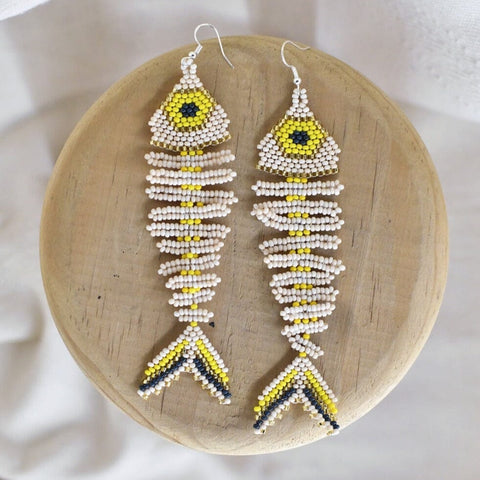
Exploring the Rich Stories Behind Traditional Jewelry Meanings
Jewelry isn't just about aesthetics; it's a medium of storytelling, expressing personal beliefs, experiences, and the essence of individuality. Every bead, piece of metal, and stone carries its significance, acting as a silent language that transcends time. Exploring the meanings behind traditional jewelry offers a journey into a rich tapestry of symbolism, revealing the unique essence and creativity behind each piece.
The Symbolic Significance of Traditional Jewelry
Traditional jewelry serves as a canvas for expression, mirroring the values, beliefs, and heritage it originates from. Each component, whether a bead, stone, or metal, carries specific meanings that enrich the narrative. For example:
- Beaded Necklaces: Often symbolize protection, unity, and spirituality. The colors and patterns chosen convey messages and intentions behind each creation.
- Gemstone Earrings: Gemstones like turquoise or coral may represent spiritual connections or signify protection against negative energies.
Understanding the context behind these symbols adds layers of appreciation to the craftsmanship. Indigenous artists at Mother Sierra infuse their creations with these profound meanings, making each piece a wearable work of art.
Shop this look: Brunnera Florecitas
Understanding How Jewelry Reflects Cultural Identity
Jewelry serves as a powerful marker of cultural identity, weaving personal expression with shared heritage. In many African cultures, beaded necklaces and bracelets signify marital status, age groups, and tribal affiliation. Similarly, the intricate gold ornaments worn by Indian brides represent prosperity, blessings, and connection to their ancestors. Every adornment, from the delicate nose rings of Southeast Asia to the bold neckpieces of the Maasai, carries a silent narrative, whispering tales of belonging and cultural pride.
Traditional jewelry showcases distinctive styles, varying widely across different regions. The choice of materials, crafting techniques, and designs reflect a deep connection to the artisans' inspirations and backgrounds. For example:
- Beaded Bracelets: The use of specific colors in beaded bracelets can signify tribal affiliations or social status within a community.
- Handwoven Rings: Intricate patterns in hand-woven rings can mirror symbols or motifs, showcasing the artisan's skill and creativity.
Appreciating the diversity and uniqueness in each piece helps to recognize the depth of craftsmanship and artistry involved.
Shop this look: Aztec Red
Meaning of Jewelry Symbols
Traditional jewelry often features symbolic motifs imbued with deep meaning. Here are some common examples:
- Animals: Lions represent strength and courage, while peacocks symbolize beauty and rebirth.
- Flowers: Lotus flowers signify purity and enlightenment, while roses represent love and passion.
- Geometric shapes: Circles represent eternity, while triangles symbolize the divine trinity.
- Colors: Red often signifies vitality and passion, while green represents fertility and growth.
Understanding these symbols allows us to appreciate the deeper message and meaning behind each piece of jewelry, offering insight into the values and beliefs it represents.
Shop this look: Laguna
Understanding the Significance of Jewelry During Festivals
Traditional jewelry plays a crucial role in various celebrations and festivals. During Diwali, Indian women adorn themselves with gold jewelry symbolizing prosperity and light. Similarly, in Chinese New Year celebrations, red jewelry signifies good luck and fortune. These pieces go beyond mere decoration, becoming key elements of festive attire and symbolizing positive wishes for the occasion.
In celebrations and festivals, the choice of jewelry is not just about style but also about embracing the spirit of the event.
- Beaded Headpieces: Worn during festivals, beaded headpieces often symbolize prosperity, joy, and ceremonial significance.
- Anklets with Bells: Anklets adorned with bells signify celebration and are often worn during dance rituals.
Exploring the role of traditional jewelry in festive contexts deepens our understanding of the emotional significance and traditions associated with these adornments.
Shop this look: Cream Tiara
Conclusion: A Journey Through the Enriching Stories of Traditional Jewelry Meanings
Each piece of traditional jewelry whispers a story, waiting to be unveiled. Exploring these meanings allows us to appreciate not just the beauty of the adornment, but also the deep layers of meaning and intention behind it. It's a journey that goes beyond aesthetics, offering insights into the values and unique expressions behind each creation. So, the next time you admire a piece of traditional jewelry, remember, that it's not just an ornament; it's a narrative waiting to be explored.
FAQs About Traditional Jewelry Meanings
Can I wear traditional jewelry that doesn't belong to my culture?
Yes, you can wear traditional jewelry as a form of appreciation and admiration for the artistry and craftsmanship. It's important, however, to understand the significance and story behind the pieces you choose to wear and to approach them with respect and sensitivity.
How can I learn more about the meaning behind specific pieces of jewelry?
-
Research the background of the jewelry.
-
Look for information from reputable sources like museums, centers, or online resources by indigenous artists and communities.
-
If possible, ask the artist or seller directly about the specific piece's meaning and symbolism.
Can I customize traditional jewelry to reflect my own story?
Many artisans offer customization options, allowing you to collaborate on designs that resonate with your narrative.








Leave a comment
This site is protected by hCaptcha and the hCaptcha Privacy Policy and Terms of Service apply.